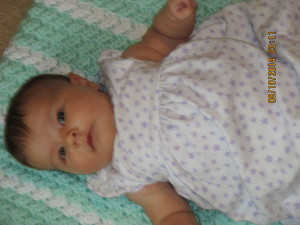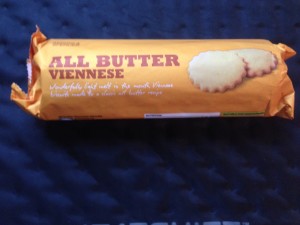England, Day 5 –Comparing the Shopping Experience
After the bigger outing the previous day, on Friday we focused on doing some serious shopping. Oddly, my husband and I both find ourselves fascinated by exploring grocery stores in other countries. So, while an outing to Tesco may not be as thrilling as trips to Stonehenge or Highclere Castle (more on that later), it has its own interesting features.
 But first Steph and I made a stop at Mothercare, the British equivalent of Babies ‘R Us, a baby superstore where you can get everything from infant furniture to diapers (they call them “nappies”) to adorable outfits for baby girls (yes, I did). Steph needed a few things for Freya and I needed to be a grandmother and spoil her a bit. We both succeeded and I had great fun when I found the clearance rack full of adorable outfits for three to four pounds each.
But first Steph and I made a stop at Mothercare, the British equivalent of Babies ‘R Us, a baby superstore where you can get everything from infant furniture to diapers (they call them “nappies”) to adorable outfits for baby girls (yes, I did). Steph needed a few things for Freya and I needed to be a grandmother and spoil her a bit. We both succeeded and I had great fun when I found the clearance rack full of adorable outfits for three to four pounds each.
A quick aside on currency. As of this writing the British pound is rough equal to $1.60 US, yet my quick survey suggested that the price in pounds for most things there was about equal to the price in dollars in the US, which basically means everything actually costs about 1 ½ times what it does here. The first time we visited England some years back, my daughter gave us what is I think the best advice on how to navigate the exchange rate: ignore it. Convert the cash you can afford from American funds to English, then just treat each pound as though it equaled a dollar, spending what you have. It saves you a lot of grief.
Our next stop was a store literally called “Next,” a nice department store where we were able to purchase some extra silverware and glasses to fill in some gaps in their supplies. That one didn’t seem much different from equivalent US chains like Macy’s.
 And then on to Tesco. Yes, it’s a grocery store. And it’s true that in general they carry the same things US grocery stores do. They even carry some of the same brands. But the packaging is always a bit different, even for brands I recognized. Those aren’t the only differences. You won’t find a “Bangers and Mash” dinner in any frozen food case in the US (at least as far as I know!) (That’s sausage and mashed potatoes in American speak.) The meat cases held more sausages, pork, and lamb, and less beef and chicken that in an American grocery store
And then on to Tesco. Yes, it’s a grocery store. And it’s true that in general they carry the same things US grocery stores do. They even carry some of the same brands. But the packaging is always a bit different, even for brands I recognized. Those aren’t the only differences. You won’t find a “Bangers and Mash” dinner in any frozen food case in the US (at least as far as I know!) (That’s sausage and mashed potatoes in American speak.) The meat cases held more sausages, pork, and lamb, and less beef and chicken that in an American grocery store
The cookies aisle seemed considerably different to me. First, they don’t actually have “cookies.” They’re called biscuits in the UK. The assortment I saw leaned more toward shortbreads and sweet crackers. There were fewer chocolate chips, butterscotch chunks, Oreos, and S’more type things.
Tinned fruits and veg were similar in content if not in size and styles of packaging. The drink aisle had more varieties of fruit juices, flavored waters, fruit-flavored energy drinks, etc. and far less soda. Some Coca-Cola products are available including Coke itself and 7-up, but to be honest, the sodas you get don’t taste quite the same anyway. Pepsi products don’t seem to be there, and my son’s favorite morning beverage, Mountain Dew, isn’t available at all.
Check out wasn’t substantially different except that the UK credit and debit cards, with their embedded chip seemed to make things move a little faster.
